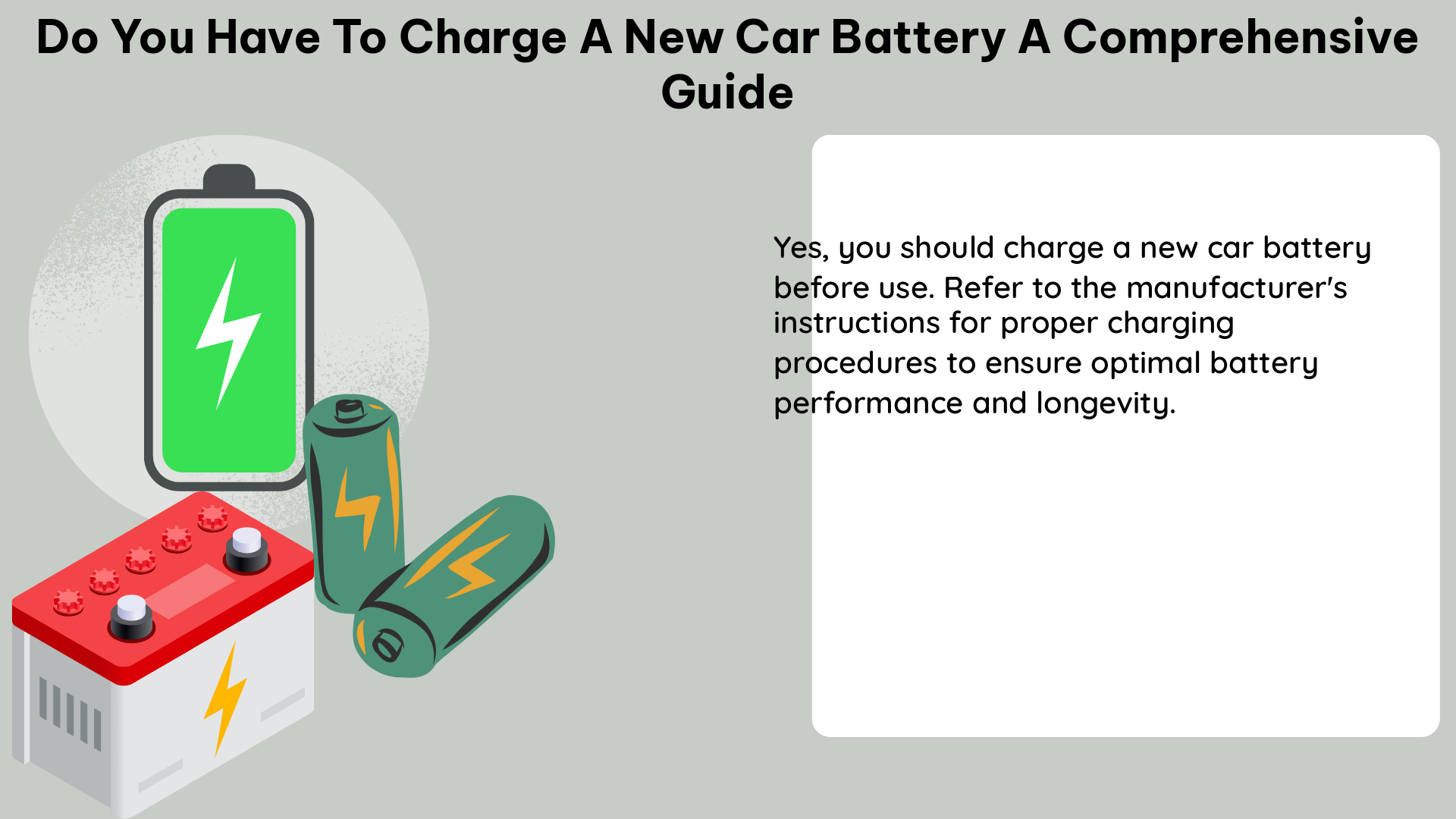When you purchase a new car battery, it typically comes with a partial charge, but it’s essential to give it a full charge before installing it in your vehicle. This is because a new battery may have been sitting on a shelf for an extended period, and its charge may have degraded over time. Charging a new car battery is a straightforward process, and this comprehensive guide will walk you through the steps to ensure your battery is ready for use.
Understanding Battery Charge Levels
A new car battery typically comes with a partial charge of around 75%. This means that the battery has been pre-charged at the factory, but it’s not at its full capacity. The recommended charging voltage for a lead-acid battery is 14.4-14.7 volts, and the recommended charging current is 10% of the battery’s capacity.
For example, if you have a 60 Ah (Ampere-hour) battery, the recommended charging current would be 6 Amps (60 Ah x 0.1 = 6 Amps). Overcharging a lead-acid battery can cause damage, such as corrosion and electrolyte loss, so it’s essential to follow the manufacturer’s instructions carefully.
Charging a New Car Battery

To charge a new car battery, you can use a battery charger or a battery maintainer. A battery charger will charge the battery to its full capacity, while a battery maintainer will keep the battery at its full charge and prevent it from sulfating, which can shorten its lifespan.
When charging a new car battery, follow these steps:
- Disconnect the battery from the vehicle.
- Connect the positive (+) terminal of the battery to the positive terminal of the charger.
- Connect the negative (-) terminal of the battery to the negative terminal of the charger.
- Plug in the charger and turn it on.
- Monitor the charging process and follow the manufacturer’s instructions carefully.
- Once the battery is fully charged, disconnect the charger and reconnect the battery to the vehicle.
It’s important to note that overcharging the battery can cause damage, so it’s crucial not to leave it on the charger for longer than necessary. Most battery chargers have a charging cycle that automatically shuts off when the battery is full, but it’s still a good idea to keep an eye on it to ensure it doesn’t overcharge.
Driving the Vehicle After Battery Installation
Once the new battery is charged and installed in your vehicle, it’s a good idea to drive the car for a while to allow the alternator to charge the battery fully. The alternator is designed to maintain the battery’s charge, not to fully charge it, so it’s important to give it a little help by driving the car.
During the initial driving period, the alternator will work to replenish the battery’s charge, ensuring it’s at its full capacity. This is especially important if the battery has been sitting for an extended period or if the vehicle has been in storage.
Maintaining the Battery’s Charge
If you’re not going to be using your car for an extended period, it’s a good idea to use a battery maintainer to keep the battery charged. This is especially important in cold weather, as a fully charged battery is less likely to freeze and crack.
The ideal storage voltage for a lead-acid battery is 12.6-12.8 volts. A battery maintainer will keep the battery at this voltage, preventing it from discharging and ensuring it’s ready for use when you need it.
Conclusion
In summary, while a new car battery does come with a partial charge, it’s still a good idea to give it a full charge before installing it in your vehicle. Overcharging the battery can cause damage, so it’s important to follow the manufacturer’s instructions carefully. Once the battery is installed, driving the car for a while will allow the alternator to charge it fully. If you’re not going to be using your car for an extended period, using a battery maintainer to keep the battery charged is a good idea.
References:
- Will just starting a car and leaving it on charge the car’s battery, or does the car have to actually be driven? https://www.reddit.com/r/askcarguys/comments/vqkvdx/will_just_starting_a_car_and_leaving_it_on_charge/
- Ultimate Car Battery Guide: How to Charge, Maintain, Replace, and | Canadadrives.ca https://www.canadadrives.ca/blog/maintenance/the-ultimate-car-battery-guide
- Tesla 2021 Impact Report https://www.tesla.com/ns_videos/2021-tesla-impact-report.pdf
- charging a new replacement battery before install. | Bob Is The Oil Guy https://bobistheoilguy.com/forums/threads/charging-a-new-replacement-battery-before-install.226885/
- DIY: Register and Code a New Battery (comprehensive guide) https://www.1addicts.com/forums/showthread.php?t=1338304

The lambdageeks.com Core SME Team is a group of experienced subject matter experts from diverse scientific and technical fields including Physics, Chemistry, Technology,Electronics & Electrical Engineering, Automotive, Mechanical Engineering. Our team collaborates to create high-quality, well-researched articles on a wide range of science and technology topics for the lambdageeks.com website.
All Our Senior SME are having more than 7 Years of experience in the respective fields . They are either Working Industry Professionals or assocaited With different Universities. Refer Our Authors Page to get to know About our Core SMEs.